C/2015 V2 Johnson is a hyperbolic comet that was discovered on 3 November 2015 by Jess Johnson from the Catalina Sky Survey. It has an orbital period of 14 million years. At closest approach to the Sun it was 1.64AU.
The comet was observed and photographed by many people around the world, such as amateur astrophotographer Tony Horton, who captured it from Ross On Wye, Herefordshire, UK (see below).
For astro-imaging advice, read our beginner's guide to astrophotography, and don't forget to send us your images or share them with us via Facebook, Twitter and Instagram.

But one person who really captured the progress of C/2015 Johnson at its best was comet-hunter and astrophotographer José J. Chambó, who observed and imaged the comet from Valencia, in Spain.
José captured some beautiful images of the comet using an Atik 383L camera and a GSO 8-inch telescope.
He captured this one on 4 February 2017 from Valencia, Spain.
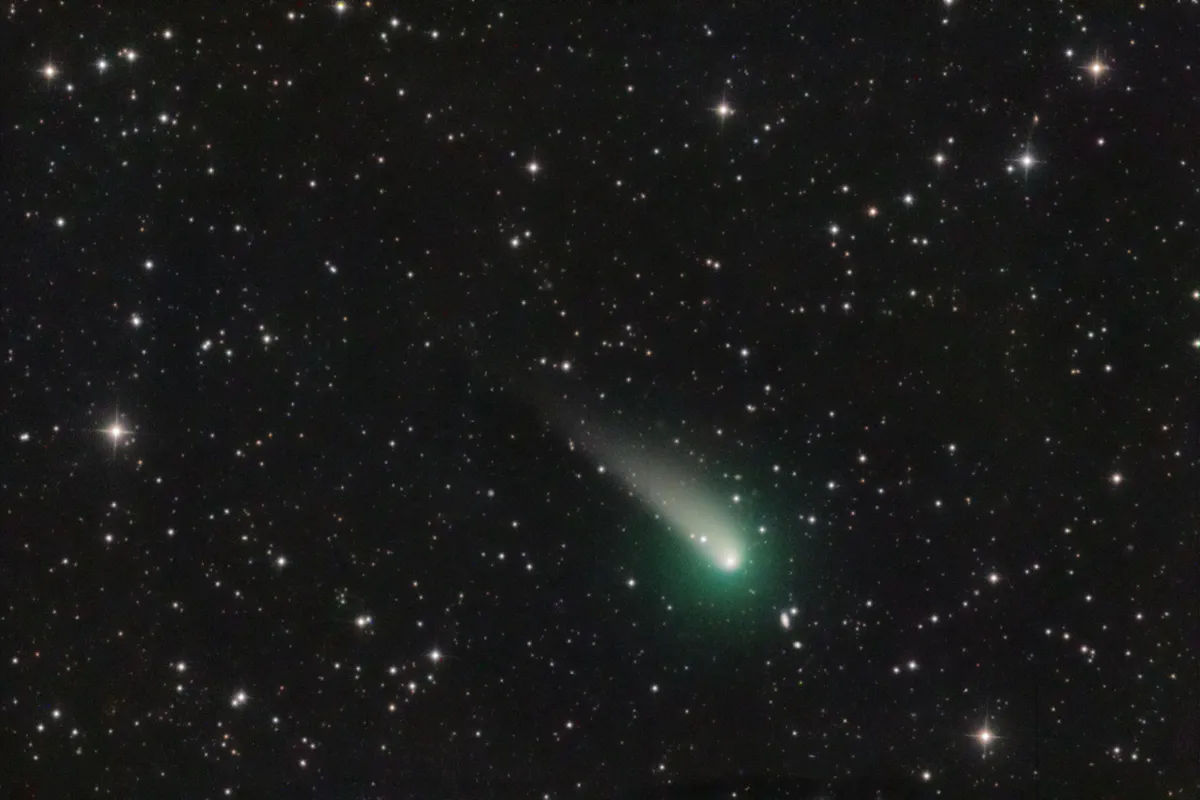
José said: "The comet is now four months within reach perihelion and with a brightness of 10.5 magnitude. Its dense tail of dust is 12 arcminutes long, while this image clearly shows around the head an outer gassy coma with green colour of 5 arcminutes that corresponds to a sphere of 350,000 km in diameter."
He then captured another image of the comet (see below) on 26 March 2017, also from Valencia.
He said "At this time the comet had a brightness of mag. 9.5 and, as can be seen in this image, a greenish coma with a diameter of 10 arcminutes and a dust tail near 20 arcminutes toward northwest."
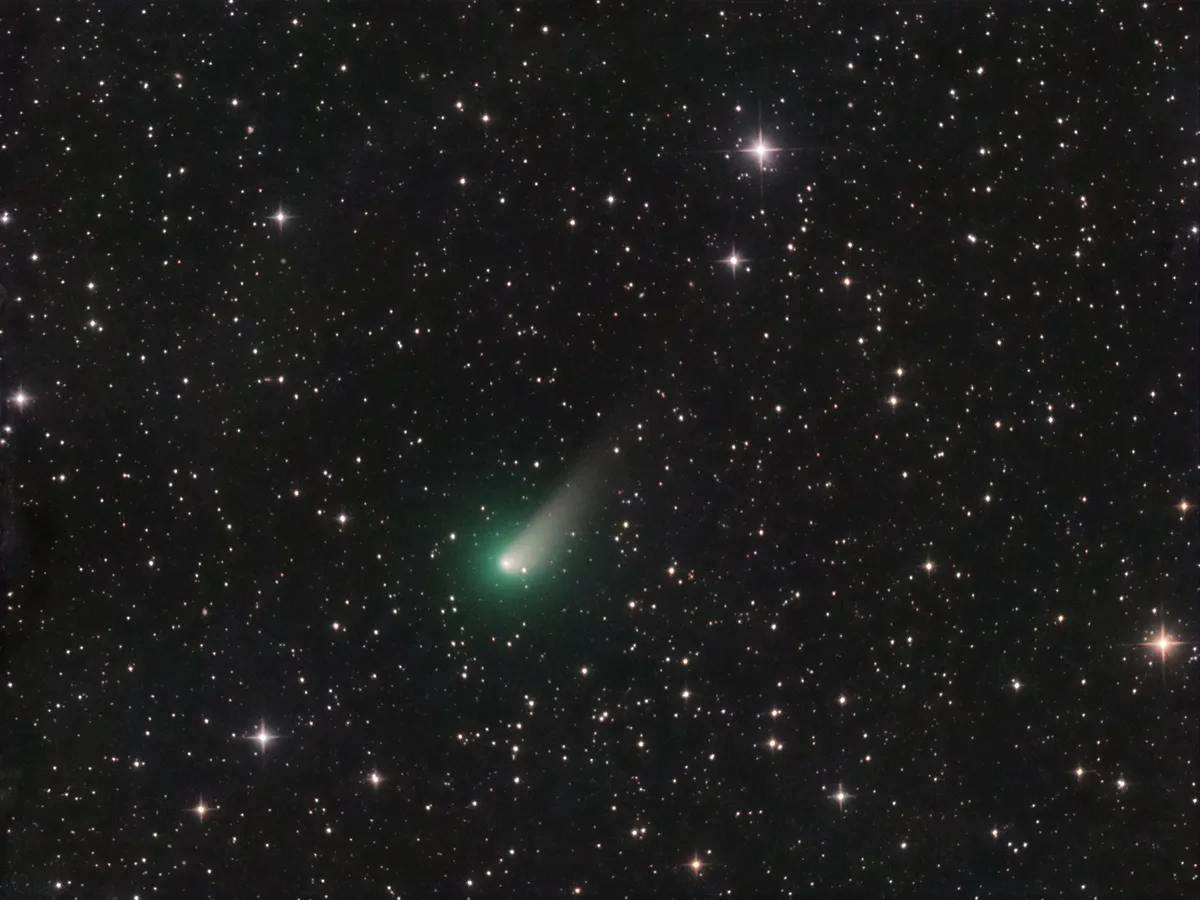
José then captured the following image of Comet C/2015 V2 (Johnson) remotely on 5 April 2017 from Mayhill, New Mexico, USA using an FLI-PL11002M camera and a Planewave 20-inch CDK telescope.
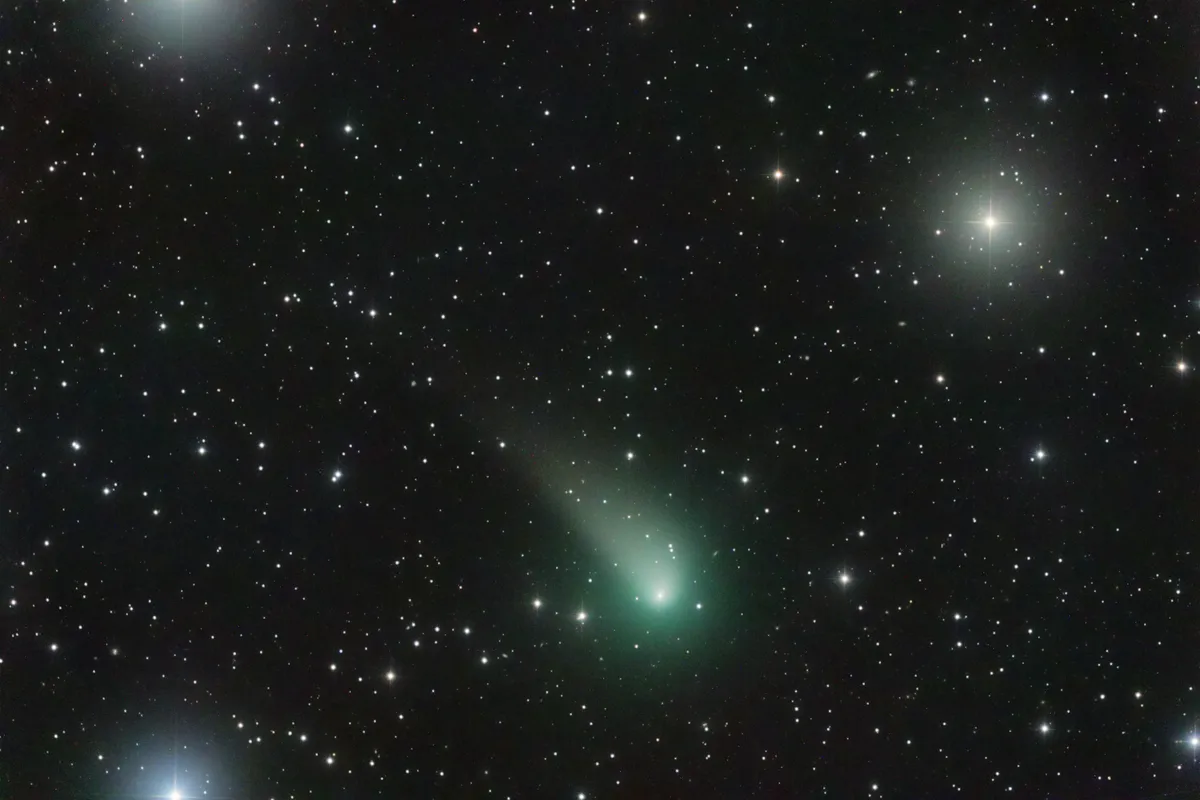
On 2 May 2017, José photographed the comet again from Valencia, Spain, resulting in the image below.
He said: "As well as from the tail of dust grains that remains to northwest, the comet has an ionic tail more narrower and fainter, which is departing from the coma toward southwest (to bottom right), although it is barely visible in this image. The bright red star is mag. 5.4 2 Herculis."

On 17 May 2017, José captured the image below of the comet, remotely from New Mexico.
He said: "In this wide-field image we can see its dust tail departing toward northwest (to bottom right) and its more faint ionic tail to south toward the brightest star Delta Bootis at left."
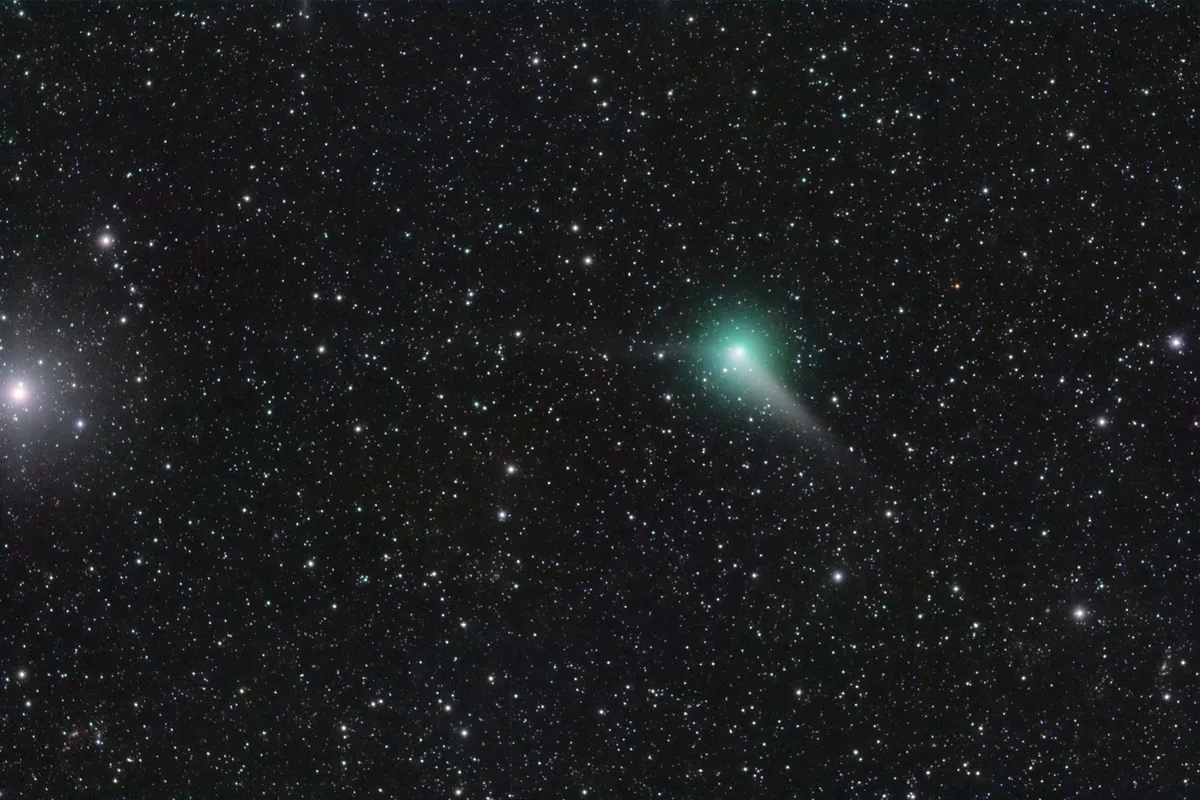
The same night, José captured the comet in-situ from his back garden in Valencia, Spain, the results of which can be seen below.
José said: "A few hours after getting my previous wide field picture remotely, I took this more narrow image of comet C/2015 V2 (Johnson) from my backyard with habitual equipment.
"As well as the dust tail with a reddish hue toward bottom right corner, although very faint we can also see the narrow ionic tail toward left, leaving the field."

José then captured the image of the comet below on 24 June 2017 from Valencia.
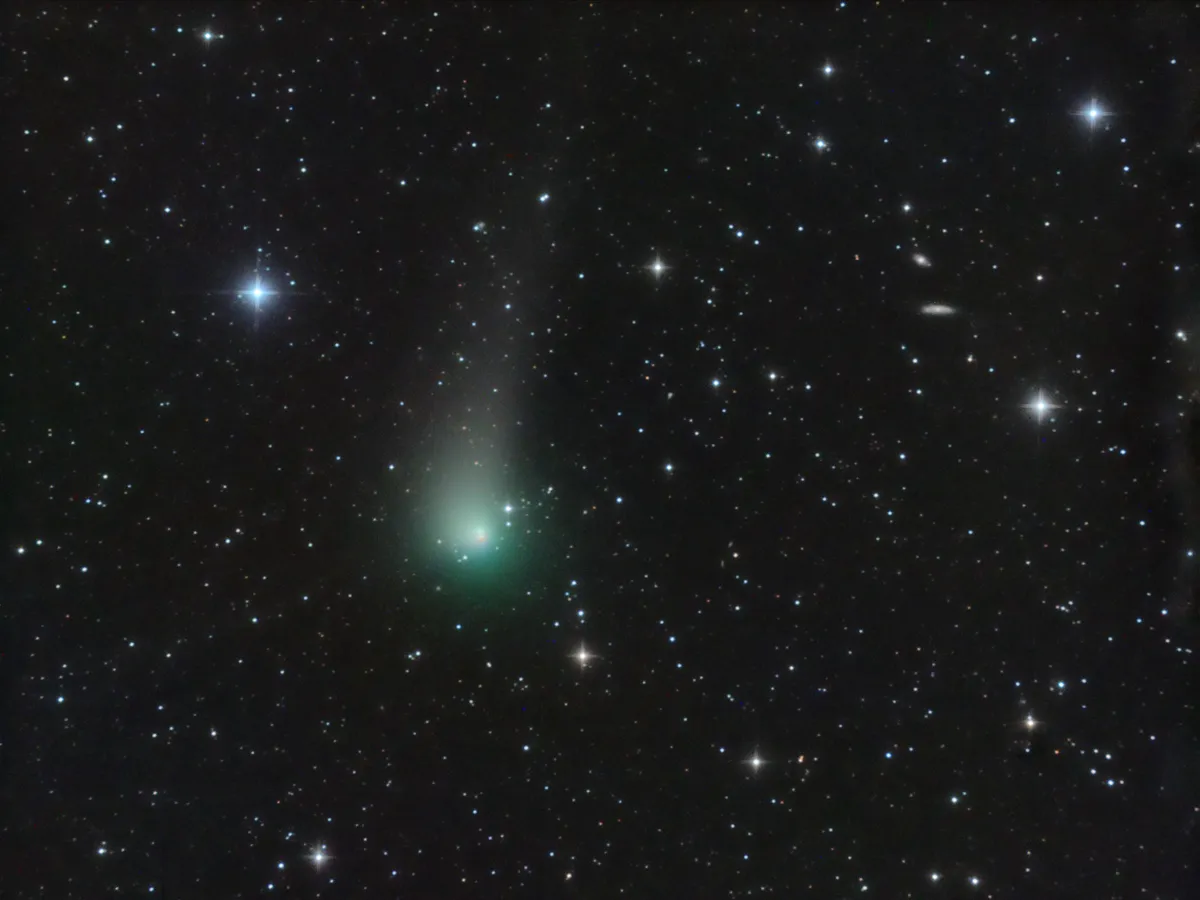
He said: "In this image the comet was going away from Sun and Earth but still kept maintained a brightness of +7.5 magnitude and a coma 15 arcminutes in diameter, a dust tail stretching up to the north edge of the photo and very faint ionic tail barely visible toward south-east (down-left).
"Some small galaxies appear in this image in the Virgo constellation: notably NGC 5506 and NGC 5507 in the upper right corner."
Thanks to José for sharing his images with us. For more of José's work, visit his Astrobin page.